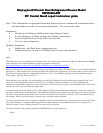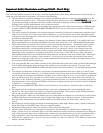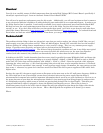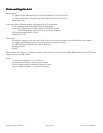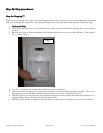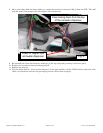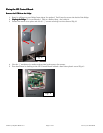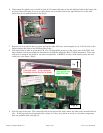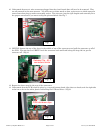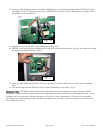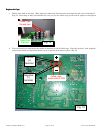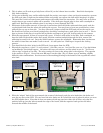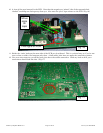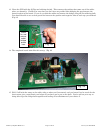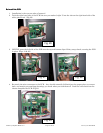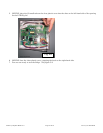
© 2007 by Stephen Beck V1.0 Page 3 of 19 Use at your Own Risk
Overview:
Overview:Overview:
Overview:
Your job is to carefully remove 2 failed components from the main High Voltage (HV) Control Board– specifically 2
electrolytic capacitors (caps) - from an electronic Printed Circuit Board (PCB).
You will need to purchase replacement parts for this repair. Additionally, you will need equipment that is common
to any electronics hobbyist’s toolkit to de-solder defective parts and solder in new replacement parts. In order to get
the fridge fixed as fast as possible, I used readily available (to my area) replacement parts from Radio Shack (RS).
RS does not have the exact replacement parts that are used in the fridge, but they have items that are “close
enough” to use. If you don’t have a RS near you that stocks these parts, you’ll have to get them by mail order from
places like Jameco Electronics (www.jameco.com), or Mouser Electronics (www.mouser.com). I’ve ordered from both
them before and both are reliable parts vendors. From them, you can get exact replacements.
Technical stuff:
Technical stuff:Technical stuff:
Technical stuff:
The problem with the fridge is that two electrolytic caps that are used to make a low voltage (12vDC like your car)
power supply over time get weaker and fail. These are 680uF (micro Farads) 35V units that level out the rectified
and now pulsing AC voltage from a transformer to a nice even DC voltage. This is a very common power supply
design. Capacitors store electricity and more info can be located on the Wikipedia at
http://en.wikipedia.org/wiki/Capacitor . The failure of these electrolytic capacitors as I saw in my fridge was typical.
They were hot to the touch even after power was turned off while the others were not, the tops were domed or
crowned, and after removal, they checked out dramatically lower in value than the label value of 680uF.
In looking at the PCB, I could determine that these were wired in parallel (see same Wikipedia link), and hence the
circuit was using these two capacitors adding up to a total of 680uF + 680uF = 1360uF. RS had in stock a 1000uF
and 470uF 35V units that could be similarly used 1000uF + 470uF = 1470uF. Since the caps had a 20% tolerance
(meaning the value could vary +/- 20% from the rating) this pair could have a value anywhere between 1176uF and
1764uF. This can be considered “close enough” in such a power supply design. Remember, the caps coming out also
have some +/- tolerance (my parts don’t show how much) but filters like this in power supplies are OK with a little
higher value.
So when the caps fail, the power supply starts to fluctuate at the same rate as the AC wall power frequency (60Hz in
the US) which can do one of two things: creates lots of electrical noise on the power supply that the fridge’s
microcontroller (computer) mis-reads as important information that it needs to act upon and hasn’t a clue how to, or
the power becomes so poor that the microprocessor thinks it’s just starting up from being plugged in and goes thru
it’s initialization sequence which seems to include an opening and closing of the ice door flapper. This then gets
repeated indefinitely while it’s plugged in, hence the flashing and flapping you see. Worst case is there is
insufficient power to pull in the relays that do things like start the compressor that keeps the fridge cold with the
obvious end results to the meat in your freezer. Have a Bar-B-Q with the neighbors so it doesn’t go to waste.
Whew.



